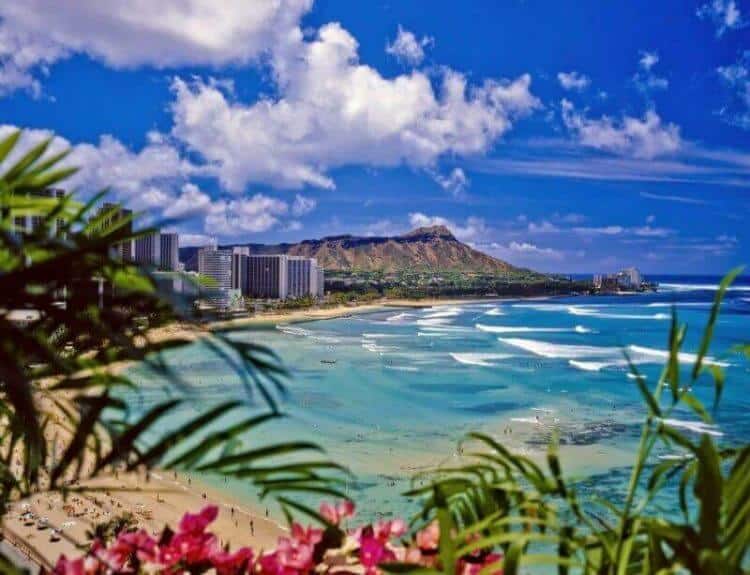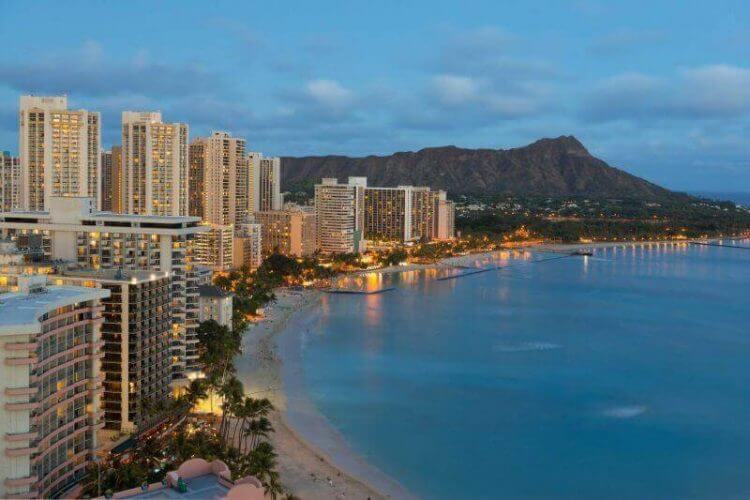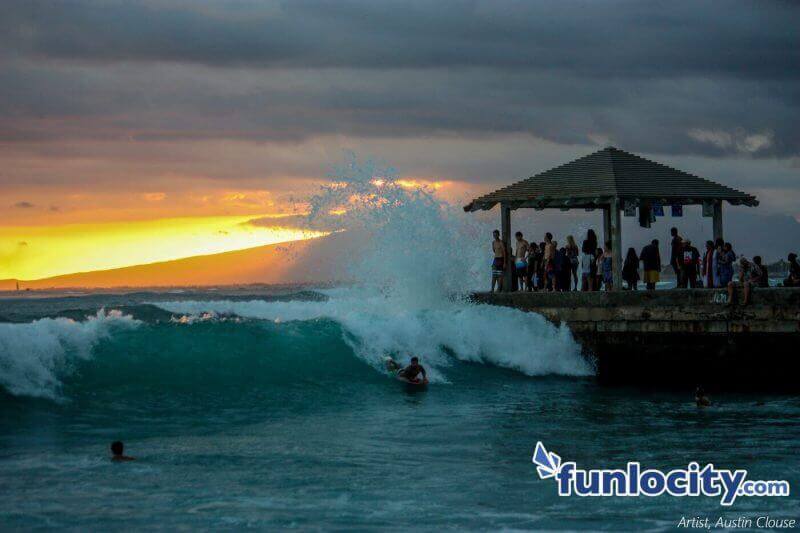Waikiki bears little resemblance today to the place it was in the late 1800’s and early 1900’s. It’s hard to imagine that the Waikiki in Honolulu we know today was at one time mostly a swampland. In the Hawaiian language, the name Waikiki means spouting fresh water; it was given this name because of the streams and springs that fed the wetlands.
Back in 1794, Waikiki was the setting for the beginning of one of Hawaii’s most historic battles. King Kamehameha I and his army arrived from the Big Island and stormed Waikiki Beach. He and his men then headed for Nu`uanu where they proceeded to take on Oʻahu chief Kalanikupule and his men. King Kamehameha’s forces proved to be superior as they forced the Oʻahu warriors to retreat up the valley where they were driven off the steep Pali cliffs to their deaths.

During the time of the monarchy, Waikiki was enjoyed by many Hawaiian royals. ‘Ainahau was an estate in Waikiki belonging to Princess Victoria Ka’iulani Cleghorn who was half Hawaiian and half Scottish. Had she survived pneumonia, she would have succeeded Queen Lili’uokalani to claim the throne of the Kingdom of Hawai’i.
In the 1800’s bathhouses served as the first hotels in Waikiki; they began offering rooms for overnight stays. The Moana, the tallest building in the state at that time, was Waikiki’s first resort. It opened in 1901, and to this day remains a prominent feature along Waikiki’s iconic coastline. In the 1920’s the Ala Wai Canal was built to drain the area of its swamps and rivers. In 1927, another one of Waikiki’s famous landmarks, The Royal Hawaiian, opened its doors to Waikiki visitors. Through the decades this pink hotel has attracted entertainers, royalty, and tourists from all around the world. Hotel construction was halted briefly during World War II when the hotels were closed to visitors so that they could accommodate the servicemen.

Today, as you look out over the blue waters of Waikiki it’s hard not to notice the throngs of people enjoying the water, canoeing, surfing, stand up paddling, and swimming. However, by the end of the 19th century surfing had diminished not only in Waikiki, but throughout Hawai‘i. Once a sport enjoyed by native Hawaiians, surfing was discouraged with the arrival of missionaries in the 1800’s.
Four men were instrumental to the sports rebirth, Duke Paoa Kahanamoku and three haole (foreigners) men – Jack London, Alexander Hume Ford, and George Freeth. Duke Paoa Kahanamoku, a native Hawaiian, was one of Hawai’i’s best ocean watermen, a famous surfer and Olympic swimmer; a true beach boy, and one of the founders of the Hui Nalu Club, an informal surf club that was started in 1905.

Today, visiting Oahu typically involves a stop off or stay at Waikiki, which is the vehicle that keeps Hawai‘i’s economy moving forward. It is recognized as the playground of the Pacific – a lively place of pristine white sand beaches, tropical sunsets, world-class hotels, fine dining, shopping, and an amazing night life. It’s one of the best places to learn scuba dive in Oahu. In addition, Waikiki also boasts of the Waikiki Aquarium, the Honolulu Zoo and the beautiful 500 acre Kapiolani Park – there’s something for everyone in this Pacific playground, and best of all, everything is within walking distance.

